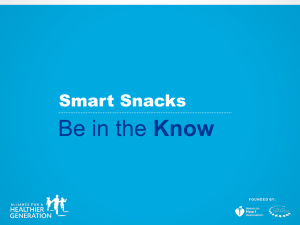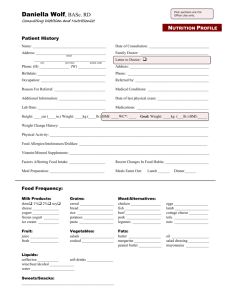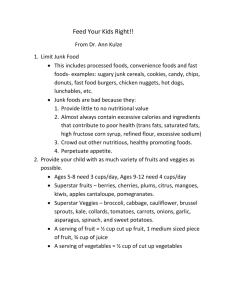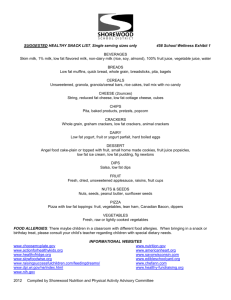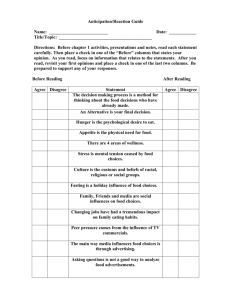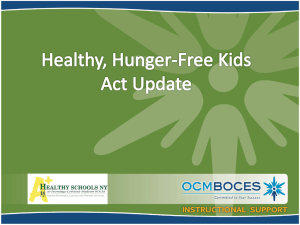Base all main meals on starchy carbohydrate foods
advertisement
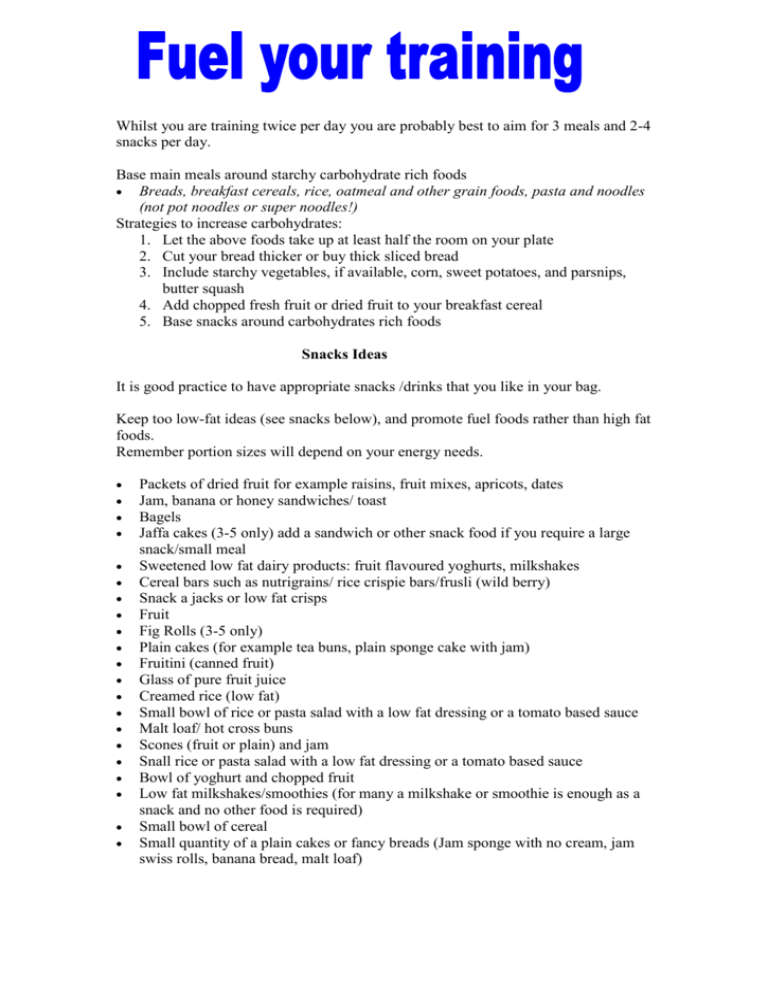
Whilst you are training twice per day you are probably best to aim for 3 meals and 2-4 snacks per day. Base main meals around starchy carbohydrate rich foods Breads, breakfast cereals, rice, oatmeal and other grain foods, pasta and noodles (not pot noodles or super noodles!) Strategies to increase carbohydrates: 1. Let the above foods take up at least half the room on your plate 2. Cut your bread thicker or buy thick sliced bread 3. Include starchy vegetables, if available, corn, sweet potatoes, and parsnips, butter squash 4. Add chopped fresh fruit or dried fruit to your breakfast cereal 5. Base snacks around carbohydrates rich foods Snacks Ideas It is good practice to have appropriate snacks /drinks that you like in your bag. Keep too low-fat ideas (see snacks below), and promote fuel foods rather than high fat foods. Remember portion sizes will depend on your energy needs. Packets of dried fruit for example raisins, fruit mixes, apricots, dates Jam, banana or honey sandwiches/ toast Bagels Jaffa cakes (3-5 only) add a sandwich or other snack food if you require a large snack/small meal Sweetened low fat dairy products: fruit flavoured yoghurts, milkshakes Cereal bars such as nutrigrains/ rice crispie bars/frusli (wild berry) Snack a jacks or low fat crisps Fruit Fig Rolls (3-5 only) Plain cakes (for example tea buns, plain sponge cake with jam) Fruitini (canned fruit) Glass of pure fruit juice Creamed rice (low fat) Small bowl of rice or pasta salad with a low fat dressing or a tomato based sauce Malt loaf/ hot cross buns Scones (fruit or plain) and jam Snall rice or pasta salad with a low fat dressing or a tomato based sauce Bowl of yoghurt and chopped fruit Low fat milkshakes/smoothies (for many a milkshake or smoothie is enough as a snack and no other food is required) Small bowl of cereal Small quantity of a plain cakes or fancy breads (Jam sponge with no cream, jam swiss rolls, banana bread, malt loaf) Fat should be minimised in your diet. By reducing fat in your diet you make room for more carbohydrates and low fat protein foods. Most effective ways of maintaining a low fat diet: (Tick box if you already follow the advice written below) Make the following substitutions: Change whole milk for semi-skimmed or skimmed Jacket, mashed or boiled potatoes instead of chips Chicken or turkey (remove skin), fish (no batter) or lean meat instead of fatty meat, burgers and sausages If you can’t reduce crisps eat lower fat crisps and try and reduce frequency (snack a jacks or Rispinos caramel rice cakes). Remember potato crisps are a low carbohydrate high fat food and will do little to promote your training needs Eat plainer, fruit (Garibaldi, fig rolls) or jam biscuits (jammy dodgers, BN strawberry favour), fancy breads (banana/fruit bread, crumpets or fruit muffins) instead of chocolate and chocolate biscuits. The amount you should allow in your diet will depend on your aims and/or energy needs. Mayonnaise is a high fat food and can transform a healthy low fat sandwich into high-fat meal. Use reduced calorie versions and small amounts. Remember: Eat a light snack before training. Eat 3 main meals and 2-4 snacks per day – pre and post training and a light supper. Drink regularly throughout the day not just before and after training monitor your pee colour. Water or cordial is fine throughout the day. Make sure you drink 500ml per hour during training – an isotonic electrolyte sport drinks or sugar-containing cordial is suitable. Refuel as soon as possible, snack within 30mins

